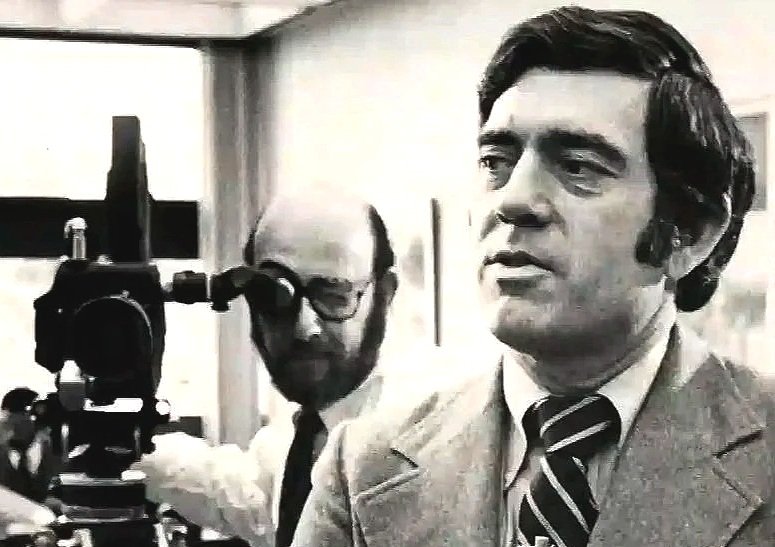It was the golden age of television
When I was a young boy growing up in Harrisburg, PA, television was the center of my universe. I was mesmerized by Saturday morning cartoons, reruns of *The Honeymooners* and *I Love Lucy*, Major League Baseball, and classic movies. However, Wednesday was my favorite night of all. I could barely contain my excitement on Wednesday evenings as I waited for 7:30 p.m. to arrive. That was my chance to commandeer the “Big T.V.,” the huge 25-inch Zenith console in the family room. Each week, I would sit on the floor just inches from the glowing CRT screen and be transported to Gotham City for the next thirty minutes.
There was nothing better than watching my heroes battle the Penguin, the Joker, the Riddler, Mr. Freeze, the Bookworm, and all the other villains. I would drape a cape around my neck, buckle on my genuine utility belt, and prepare for action. While the tongue-in-cheek dialogue went over my head, it was the fight sequences that truly thrilled me. Suddenly, I was Batman, racing around the living room, throwing air punches and karate kicks like a wild lunatic. When the dust finally settled, Batman and I would feel satisfied, knowing that the citizens of Gotham and Harrisburg were safe once again.
For the next two years, you could be sure to find me in that same spot, inches away from the front of the TV, every Wednesday night—same bat time, same bat channel. sitting on the floor, in front of that same tube, in that same spot, inches away from the front of the TV, Press the Play button below:
MY FAVORITE TELEVISION MEMORIES CARTOONS
My favorite memories of animated cartoons are with the popular characters created by Bill Hanna and Joseph Barbera. The images below are some of my favorites.
Hanna-Barbera was an American animation studio and production company, active from 1957 until it was absorbed into Warner Bros. Animation in 2001. It was founded on July 7, 1957, by William Hanna and Joseph Barbera following Metro-Goldwyn-Mayer's decision to close its in-house cartoon studio, and was formerly headquartered on Cahuenga Blvd from 1960 until 1998 and at the Sherman Oaks Galleria in Sherman Oaks, both in Los Angeles, California.
After founding their studio, they soon debuted the first Emmy-winning series (The Huckleberry Hound Show), launched the first prime time sitcom (The Flintstones), started their first spinoff (The Yogi Bear Show), began the mystery-themed cartoon Scooby-Doo, Where Are You!, and introduced the Saturday morning phenomenon The Smurfs. Hanna-Barbera went on to produce 3,000 animated half-hour programs.
Arguably, from the 1960s to the 1980s, Hanna-Barbera usurped Disney as the most successful animation company in the world, with its characters ubiquitous across media and a myriad of consumer products. The profitability of Saturday-morning cartoons was eclipsed by weekday afternoon syndication after the studio's fortunes declined in the 1980s. Click on the play buttons below:
MUSH MOUTH’S FAMOUS LAUGH
THE FLINTSTONES THEME SONG
THE FLINTSTONES
My favorite cartoon of all time was The Flintstones, which aired on ABC-TV in prime time, the first animated series ever to accomplish this. The show was originally broadcast on ABC from September 30, 1960, to April 1, 1966. The Flintstones follows the lives of Fred and Wilma Flintstone and their pet dinosaur, Dino. Loosely modeled after The Honeymooners, starring Jackie Gleason and Art Carney, The Flintstones continues to air on Cartoon Network and is syndicated worldwide.
MY FAVORITE TELEVISION MEMORIES
NEWS&TALK
Arthur Godfrey and Friends was the name of this celebrity radio program. A combination of musical variety and folksy talk, the show became legendary when Godfrey fired crooner, Julius LaRosa on the air. Watch this short clip to learn how it happened.
While News emerged as an essential part of the broadcasting day, one network above all else, nurtured the very best journalists and gave them greater freedom to search for the truth and report the News honestly and accurately. That network was CBS, and its champion was William S. Paley, Chairman of the Board. Paley defended his news organization even when the division lost money.
60 Minutes is an American television news magazine broadcast on the CBS television network. Debuting in 1968, the program was created by Don Hewitt and Bill Leonard, who distinguished it from other news programs by adopting a unique reporter-centered investigative style.
MY FAVORITE TELEVISION MEMORIES/SITCOMS THAT CHANGED THE WORLD
The Incredible Legacy of Norman Lear
Norman Lear was one of the most dominating Producers in the mid to late 70’s with his string of sitcoms. He brought laughter into our home and he demonstrated through humor, the evils of racism and other forms of prejudice. His shows took aim at some of the biggest social problems in the U.S.A. at that time, including women’s rights, economic injustice and educational opportunities for all. We could sure use a little bit of his magic today. Lear’s characters were often the embodiment of bigotry but when they would argue their position, they usually came across as ignorant and foolish. No one epitomized this more than Archie Bunker, the lead character played by Carroll O’Connor on the enormously successful, All in the Family.
All in the Family is an American television sitcom that aired on CBS for nine seasons, from January 12, 1971, to April 8, 1979.














